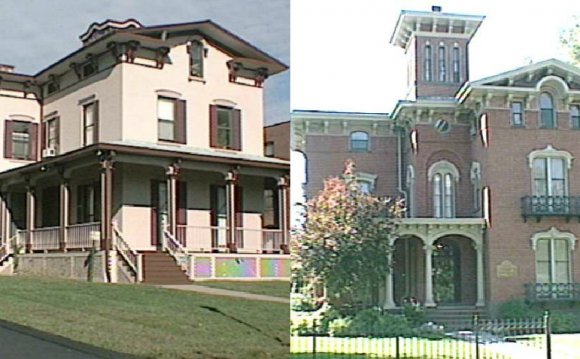
Often included in the so-called Picturesque Movement, the Italianate style began in England as a reaction to the rigid formalism that had come to dominate nineteenth-century architecture. The style derived from Italy’s rambling farmhouses, usually built of masonry, with their characteristic square towers and informal detailing. By the 1830s, Italianate had spread to the United States, where architects began to transform it into something truly American with only hints of its Italian origin. Thus, working in this style, architects had a higher degree of artistic freedom than they had in earlier, more rigid styles.
Much of the style’s popularity can be credited to architect Andrew Jackson Downing, whose own Italianate home designs were featured in two books he published: Cottage Residences (1842) and The Architecture of Country Houses (1850). Widely read by designers and the public alike, his influential book set off a wave of Italianate homebuilding around the country. The best surviving examples are wood frame with clapboard exteriors. The style waned during the economic depression of 1873. Of the many Victorian-era variants represented in Washington, DC’s historic neighborhoods, Italianate is one of the most passionate feast for the eyes. Washington dwellings in this style generally date from 1840 to 1885, with the majority built in the immediate aftermath of the Civil War. The expense and craftsmanship lavished on the exteriors offer testament to the prosperity and optimism of the era. An attractive group of Italianates can be seen at 204 Ninth Street SE. The 600 block of East Capitol Street NE also has good examples.
Characteristics
The typical Italianate was a two-story building, but examples survive in many variations, from three-story detached homes with towers and cupolas to urban town houses. For stand-alone houses, there were six basic categories (noted here in architectural shorthand): box with a hip roof; box with a centered gable; L or U plan; L plan with a tower, and a front gable.
Italianate town houses are identifiable by their wide projecting cornices with heavy brackets and their richly ornamented windows, porches, and doorways. Most American examples of Italianate mix details derived from both informal rural models and formal renaissance town houses.









